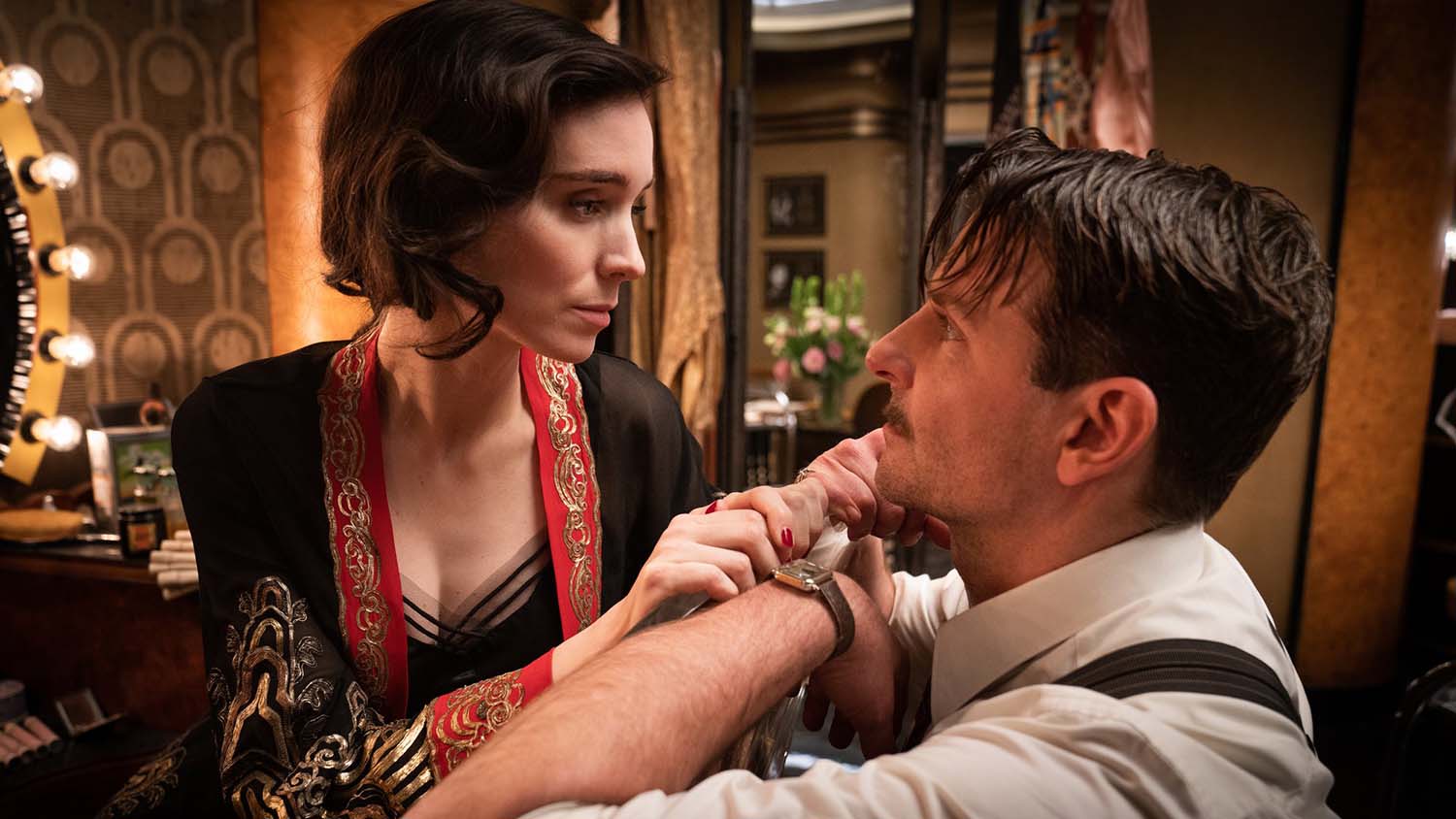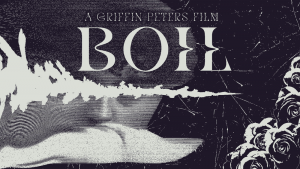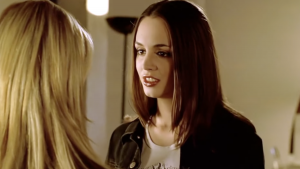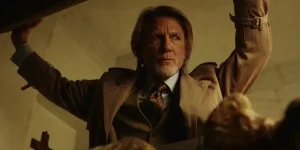

Adapted by Guillermo del Toro and Kim Morgan, Nightmare Alley (2021) is a magnificent adaptation that honors the film noir classic while giving contemporary audiences a grittier and more nuanced look at William Lindsay Gresham’s story.
Stan (Bradley Cooper) has a dark past. One he leaves behind as he enters the carnival world. Intrigued and horrified by the resident geek, Stan catches a gruesome performance without paying the required fee. Carnival manager Clem (Willem Dafoe) catches him but takes pity on Stan and offers him an opportunity to work. Stan quickly becomes a beloved member of the group of carnies. Zeena the psychic (Toni Collette) and her partner and former mentalist Pete (David Strathairn) take him under their wings showing him the ropes. He soon masters the art of deception and showmanship. Stan falls for the young and naive Molly (Rooney Mara) who is under the watchful eye of strongman Bruno (Ron Perlman). After a tragic accident at the carnival, Stan and Molly run away to the city to put on a mentalist show for the wealthy elite at an elegant nightclub. They are thriving until Stan becomes a little too intoxicated with his own powers. He meets his match with Dr. Lilith Ritter (Cate Blanchett), a psychologist who knows the inner workings of many a wealthy patron at the club. The two join forces with tragic results.


I’ve struggled to appreciate the original adaptation of Nightmare Alley (1947), directed by Edmund Goulding and starring Tyrone Power, Joan Blondell, Coleen Gray and Helen Walker. I’ve watched it numerous times but have always been put off by how the characters prey on the vulnerable and how disjointed the film seemed. However, by watching this new adaptation and revisiting the old one now I have a new appreciation of how masterful the film noir adaptation truly was.
Here is a breakdown of who played which role in the two adaptations
Stanton “Stan”— Tyrone Power (1947) and Bradley Cooper (2021)
Zeena — Joan Blondell (1947) and Toni Collette (2021)
Molly — Coleen Gray (1947) and Rooney Mara (2021)
Lilith— Helen Walker (1947) and Cate Blanchett (2021)
Ezra Grindle— Taylor Holmes (1947) and Richard Jenkins (2021)
Bruno — Mike Mazurki (1947) and Ron Perlman (2021)
Pete — Ian Keith (1947) and David Strathairn (2021)
Clem Hoatley — James Flavin (1947) and Willem Dafoe (2021)
What makes the new adaptation different? We’re given much more background on Stan. It’s clear that he’s a disturbed individual and Bradley Cooper does a great job conveying this (his final scene is mind blowingly good). In Tyrone Power’s version, Stan is more of a charming opportunist. The events are a lot more gruesome and there is more at stake for this cast of characters. Toni Collette, Rooney Mara and Cate Blanchett all did fantastic job as the three main female characters. They have their own agency and don’t necessarily exist to serve the main male protagonist. It’s sad that it has to be said but there are many films where this is lacking. The new film expands the stories of some key characters including Clem, played by the always brilliant Willem Dafo, as well as Ezra Grindle who is one of Stan’s major victims. A lot of attention was put to visuals including costumes, decor and all the unique elements of the carnival, both big and small. There are some fantastic shots that are works of art in themselves. Dr. Lilith’s office is an Art Deco dream. Anyone who loves the era will find a lot to enjoy from the beautiful to the macabre.
The 2021 version was written by Guillermo del Toro and Kim Morgan, who are both great appreciators of classic film (Kim runs the classic film and pop culture blog Sunset Gun!) and really dived into the sources material and into the life of the author William Lindsay Gresham whose own experiences influenced his writing. The new film is 2 hours and 30 minutes which ads about 40 minutes to the original. I highly recommend watching this in the theater to really immerse yourself in the visuals and the story because this is one you’ll want to watch in one go.
Nightmare Alley is a fascinating study in human nature. What we’re drawn to, what scares us, what drives us and how we manipulate others to get what we want. Both the film noir adaptation and the new version both drive home an awareness of the dangers of preying on others.
Nightmare Alley (2021) is currently in theaters and Nightmare Alley (1947) is streaming on the Criterion Channel.








